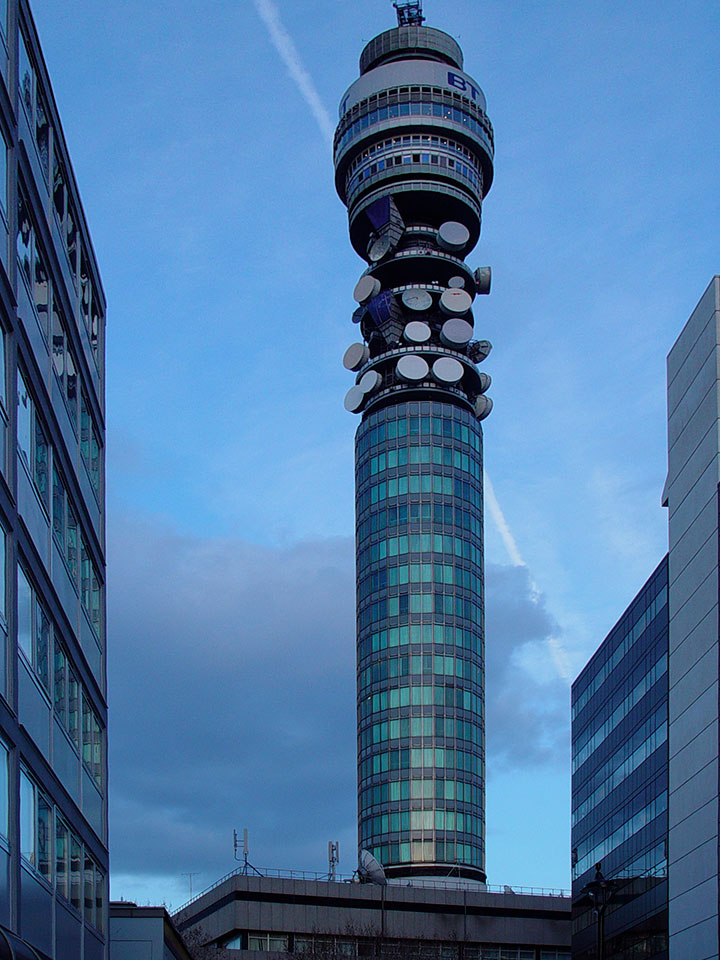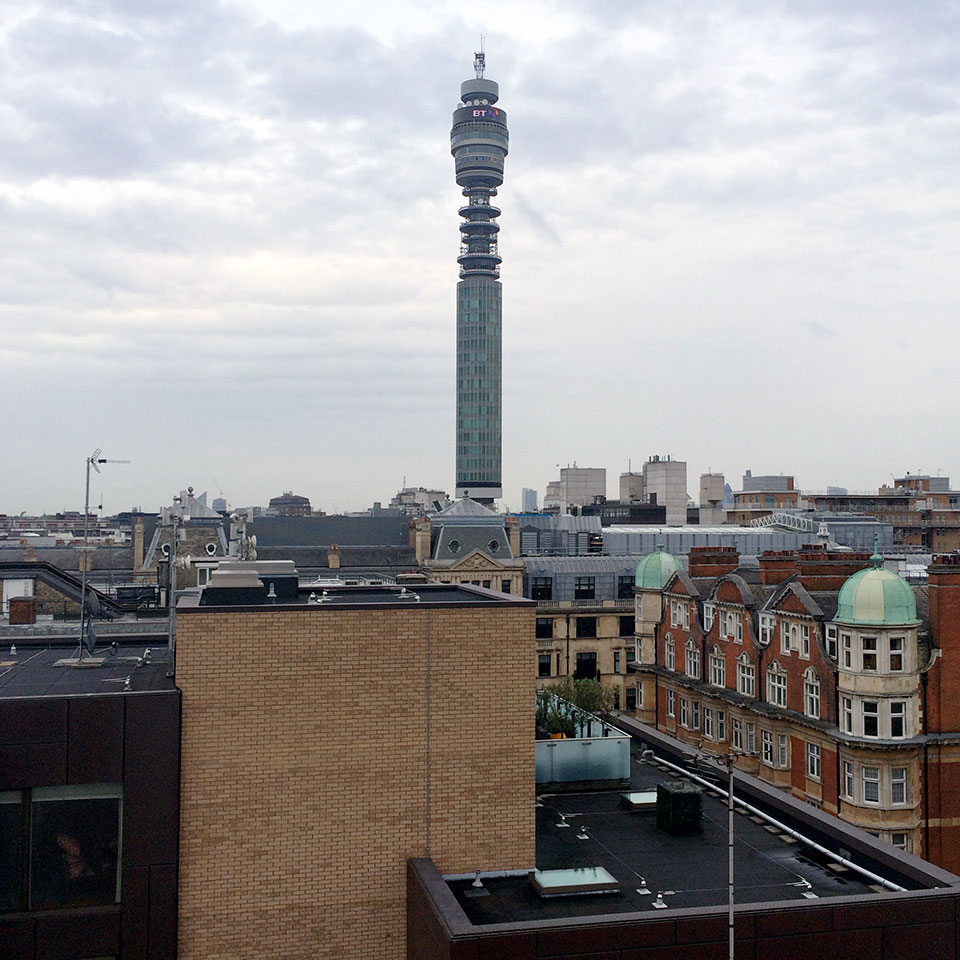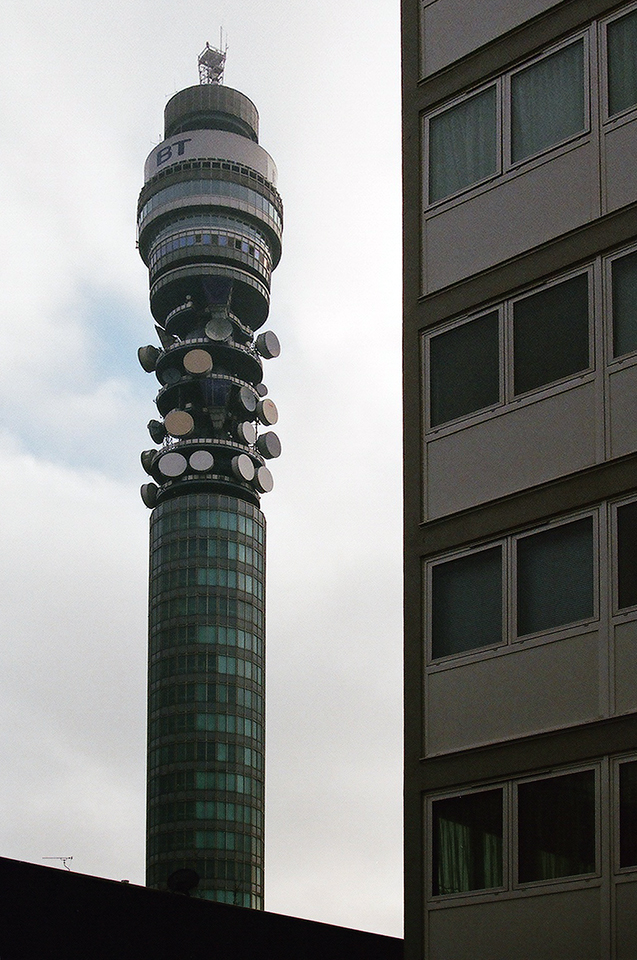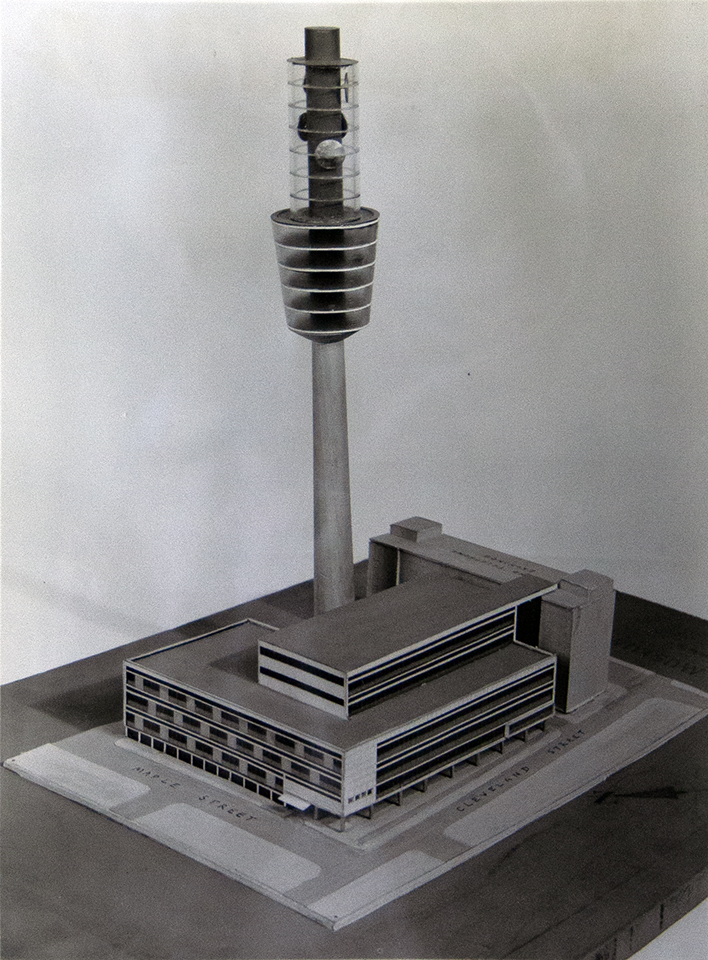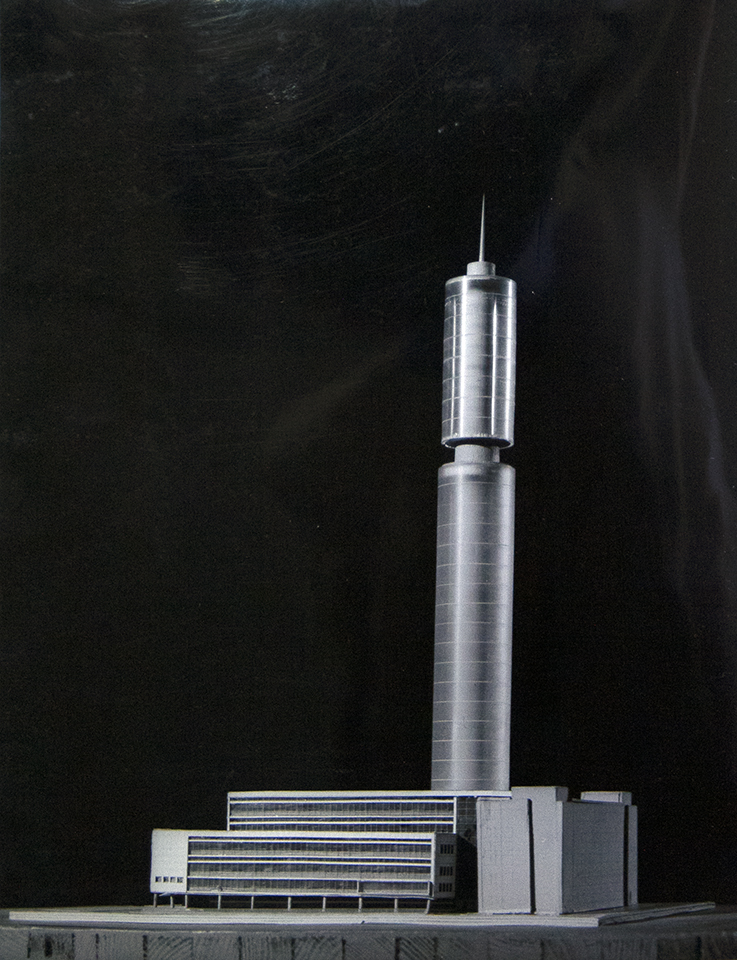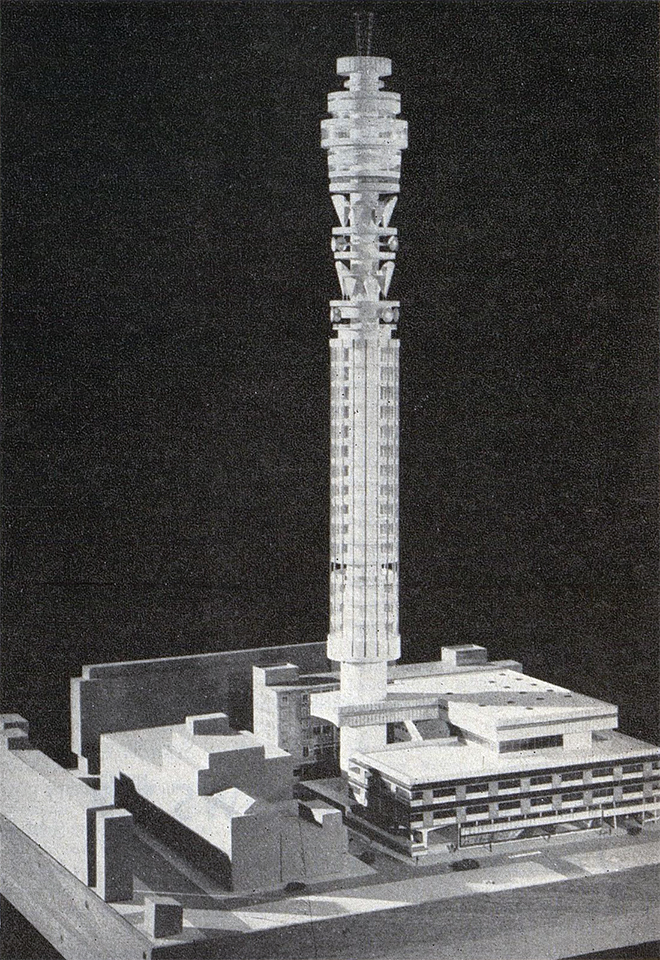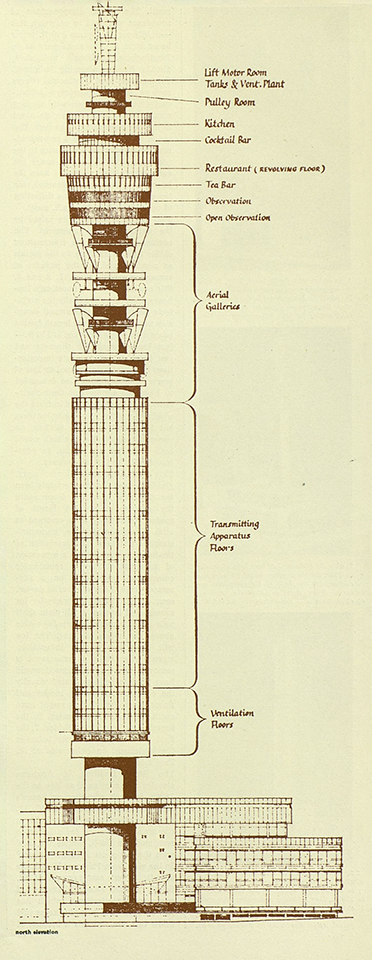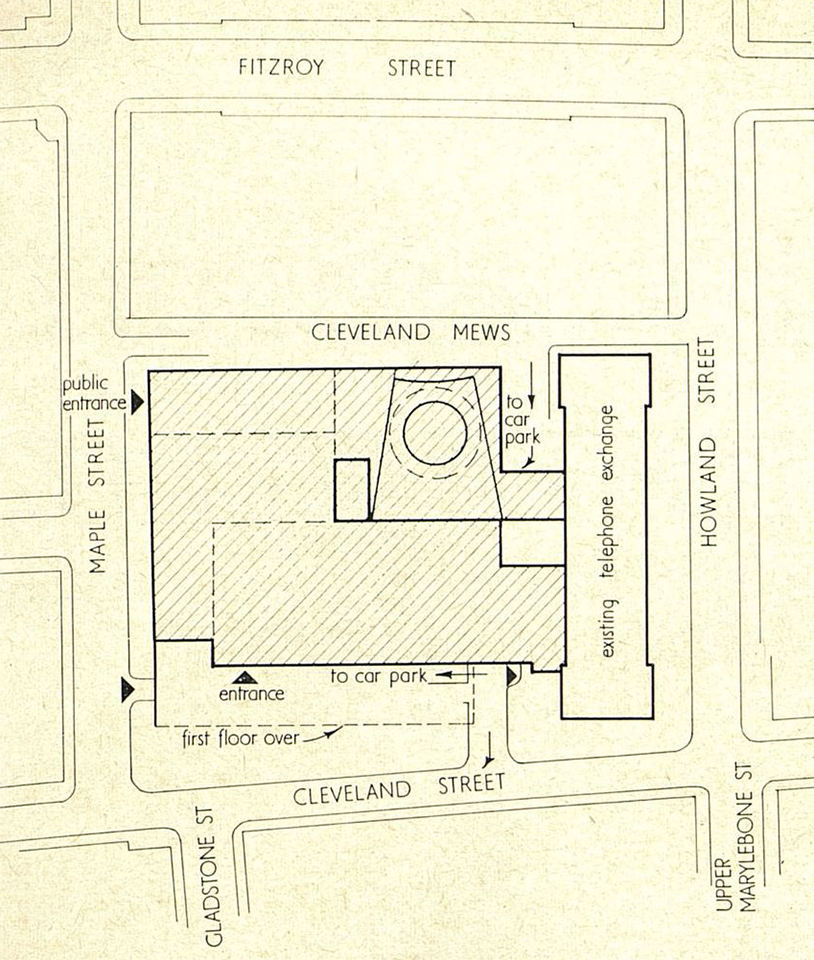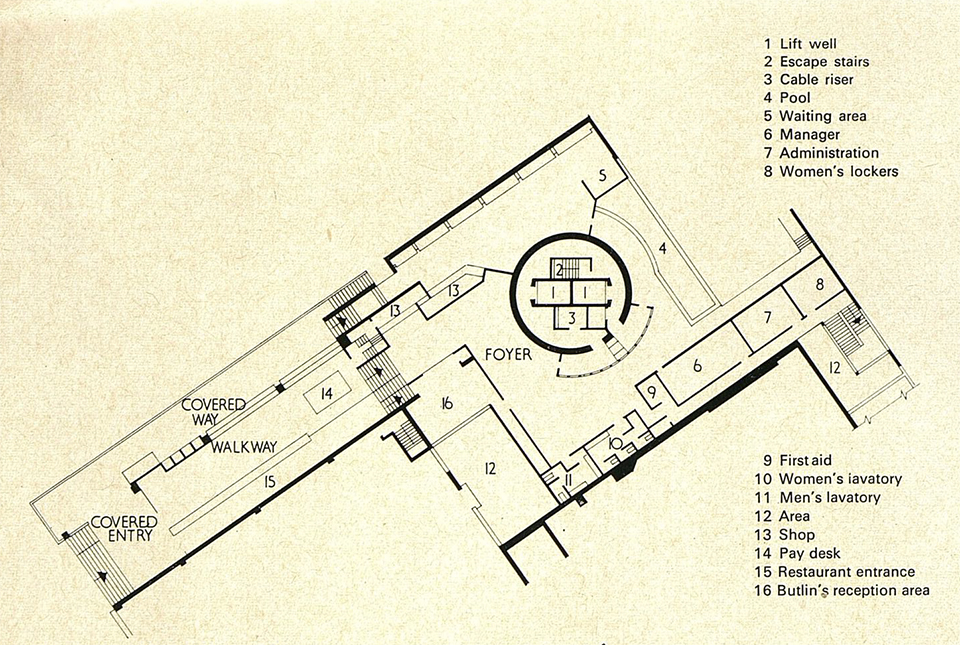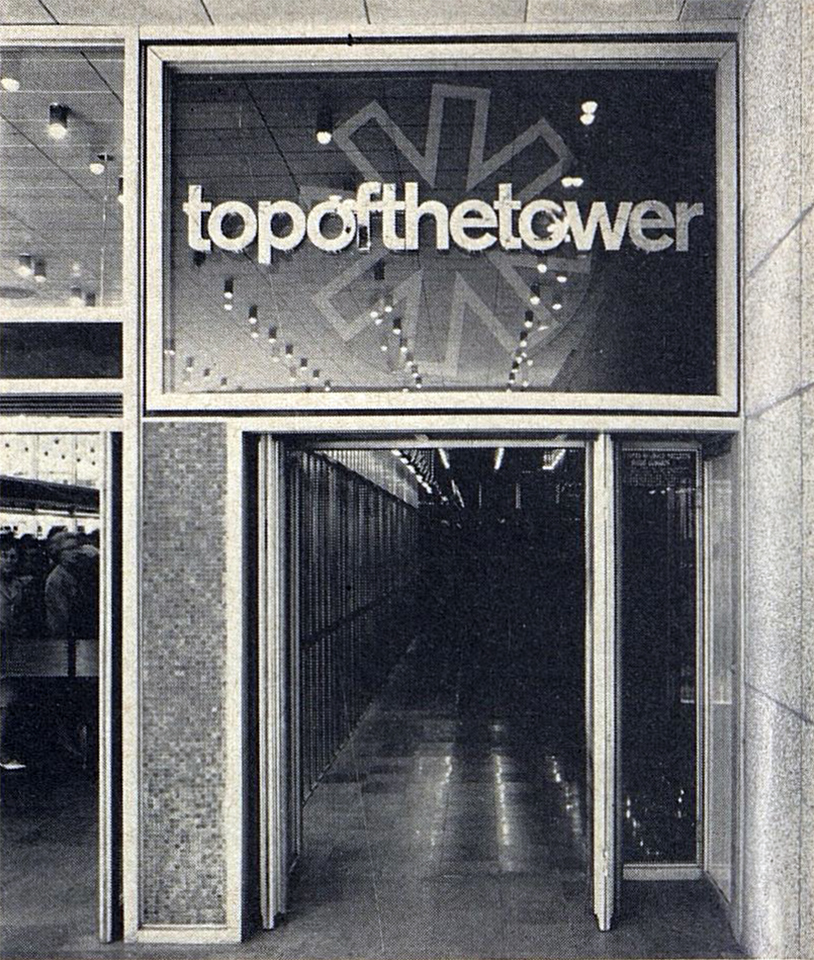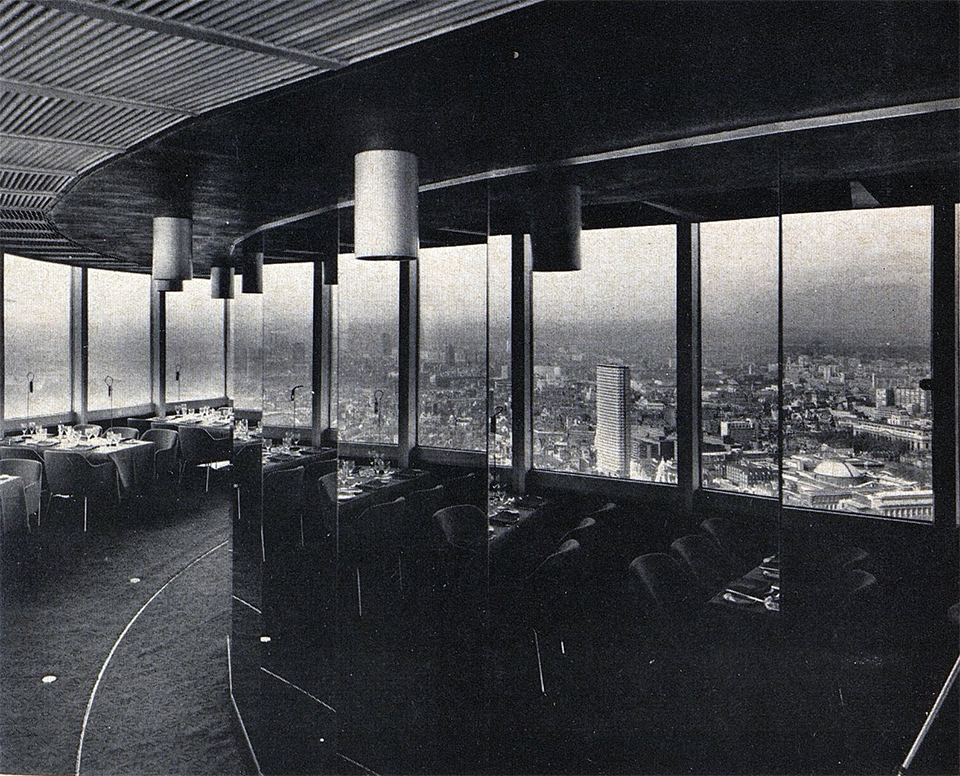Post Office Tower
1965
The Architectural Review recorded Eric Bedford as saying that ‘the one place the amenity people could not defend on grounds of architectural beauty was Tottenham Court Road’, hence, the situation of the Post Office Tower. Apparently the sole arbitrary aesthetic decision on the part of Bedford and project architect G.R. Yeats was that the tower should be round, otherwise it was ‘coaxed into expressing its own personality within the minimal rules of architectural grammar’. The circular column was proposed in 1959, following earlier square plan schemes. The tower was one part of a larger complex that included a podium with a trunk exchange. The various transmitting and ventilating functions were housed in the 16 curtain walled levels that surrounded the mid-section of the tower. Above these were the aerial galleries (originally designed to be enclosed), hosting paraboloid aerials 27ft (8m) tall and made from ribbed aluminium, their shape and scale offered greater capacity for receiving. The inverted pyramid forms had chamfered faces over the horns’ apertures made from a pearlescent Hypalon-coated terylene sheet. Higher still were the public areas, two observation decks, a tea bar, restaurant, cocktail bar and kitchen. Topped by the lift motor room and a lattice framed mast, the 619ft tower was the tallest building in the UK until the NatWest Tower was completed in 1980. The way in which the tower added to the London skyline and was viewed from across the capital was of great concern to commentators of the period, yet now seems inconsequential given the masses of tall buildings that have come to define the capital. Observers went as far as contextualising the tall plain shaft with a ‘richly modelled cupola’ using Sir Christopher Wren’s St. James Garlickhythe and declared it a ‘radio campanile’, such was the positive reception in the architectural press. Analysed in relation to its constructional qualities in the AJ, it was seen as a ‘sound and straightforward solution to the problems posed’ and comments regarding its situation echoed those of Bedford, pragmatic prose put it in a ‘commercial twilight zone’. It was opened to the public in May 1966. The Top of the Tower restaurant was operated by Butlins, but was closed in 1971 following an IRA bombing. The tower formed part of the UK’s microwave backbone communications network – vital to the Cold War defence strategy and, as such, much information about it was designated as officially secret.
